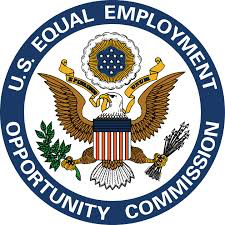By Kayla L. Robinson
U.S. Equal Employment Opportunity Commission (EEOC) investigations require a coordinated effort throughout various parts of an organization – including human resources, the legal department, and business operators. With so many sectors of a company involved, it is important for companies to develop strategies for handling these investigations. This article highlights some of the strategies that companies should implement, if they haven’t already, when handling an EEOC investigation, and how to leverage these strategies when navigating the possible outcomes of an EEOC investigation.
Investigate
The centerpiece of responding to an EEOC investigation is establishing the factual record. This record will be used in the company’s position statement to the EEOC, the company’s response to any EEOC requests for information, and, if the case proceeds to litigation, the Company’s strategy during the litigation. In light of this, companies should place an early emphasis on investigating the facts underlying the EEOC charge. Ideally, the company has already investigated the facts, particularly in cases where an employee made previous complaints directly to the company. Even if an investigation previously took place, it is important to verify the facts of that investigation. At a minimum, this means re-interviewing the managers involved, reviewing other witness statements, and ensuring all relevant documents have been compiled. This process facilities the company’s response to an EEOC investigation in two ways: first, it enables the legal department to draft an effective position statement in response to the EEOC’s investigation. Second, it refreshes the recollection of managers and other witnesses, which will be valuable if the EEOC requests to interview these individuals.
Communicate
This strategy can be divided into three subparts: (1) communication with the EEOC; (2) internal communication; and (3) communication of the company’s position through the position statement.
Communication with the EEOC
This may seem intuitive; however, it is important for any company to maintain open communication with the EEOC. If a company chooses to use outside counsel for the EEOC investigation, it is important for outside counsel to reach out, as soon as possible, to the EEOC with a letter of representation. Once outside counsel enters an appearance, all EEOC communications will go through counsel, ensuring that all that information is disseminated appropriately throughout the company, and no message goes unnoticed or ignored. Even if a company does not elect to use outside counsel, it is advisable to appoint someone within the company, ideally from the legal department, to act as the primary point of contact for the company during the EEOC investigation. In addition, it is vital to respond timely to EEOC requests for mediation, requests for information, and to inform the EEOC of any needed deadline extensions. This ensures that the company maintains goodwill with the EEOC and also ensures that no deadlines are missed, which could result in adverse findings against the company.
Internal communication
Communication internally is vital to navigating an EEOC investigation. HR professionals need to communicate with business operators in order to determine the factual record. Legal professionals, whether in-house or outside counsel, have to maintain open communication with both HR professionals and business operators in order to ensure that information is provided to the EEOC timely, accurately, and effectively. This communication can be achieved in various ways, however, it is always helpful to have at least one meeting, either in person or by phone, with all actors involved in order to facilitate the sharing of information.
The Position Statement
The position statement constitutes a company’s official response to a charge. Its reach, however, goes much farther than the EEOC investigation process. In general, the position statement should communicate a company’s response to all allegations made in a charge. However, the position statement can also be used by a charging party in a subsequent litigation to demonstrate pretext, meaning that a company’s non-discriminatory reason for taking an adverse action was used to disguise its discriminatory intent. Accordingly, it is essential that a company pay particular attention to the information that is communicated through its position statement. A company’s investigation into the facts and open internal communications throughout the EEOC investigation will help ensure that adequate and accurate information is included in the position statement. In addition, counsel drafting the position statement should ensure that all relevant actors in the company review the position statement – including business operators. Having HR professionals and business operators review the position statement minimizes the potential for factual errors and decreases the likelihood that the position statement could be used to demonstrate pretext in subsequent litigation.
Cooperate
Successful participation in an EEOC investigation requires that all parties involved cooperate and work together to achieve the best possible outcome. In addition to the position statement, the EEOC may require a company to respond to requests for information, permit the EEOC to conduct a site visit, or set up interviews. These requests can be unsettling for a company, but reasonable cooperation, in conjunction with the open communication that a company has established internally and externally with the EEOC, will facilitate any of the aforementioned investigative actions taken.
Possible Outcomes
When implementing these strategies, companies should also keep in mind the possible outcomes of an EEOC investigation, and also be mindful of the EEOC’s mediation program. There are three possible outcomes of an EEOC investigation. First, a “no cause” determination can be issued, which means that the charge is dismissed after the EEOC’s investigation, and the EEOC issues the charging party a notice of the right to sue. “No cause” determinations have historically been issued in over half of the EEOC’s investigations. Second, the EEOC may issue a “cause” determination. The EEOC will issue a “cause” determination if it determines during the course of an investigation that there is reasonable cause to believe that discrimination occurred based on the evidence received during the investigation. The third outcome, conciliation, occurs only if the EEOC issues a “cause” determination. After the EEOC has issued a “cause” determination, it will attempt to work with both parties to agree on relief for the charging party. If the EEOC is unable to successfully conciliate the charge, it will issue a notice of the right to sue or, in rare occasions, agree to file a lawsuit on behalf of the charging party. “Cause” determinations historically have been issued in less than 10% of investigations and the EEOC has historically filed suits on behalf of charging parties in less than 5% of investigations.
Shortly after the start of an EEOC investigation, the parties have the opportunity to participate in the EEOC’s mediation program. The mediation program can be particularly useful as it will pause any EEOC investigation into the charge, and the parties will instead determine whether they can reach a resolution. Companies should consider utilizing the mediation program if, after evaluating the charge, the company determines that the factual record is incomplete or may lead to a cause determination.
Overview In summary, when a company is subject to an EEOC investigation, it is essential that all of the actors involved, including business operators, HR professionals, and the legal department, implement the following strategies: (1) investigate the claims fully; (2) communicate openly internally and with the EEOC; (3) effectively communicate the company’s position in its position statement; and (4) cooperate with all follow-up requests from the EEOC. It is also useful to keep in mind the possible outcomes of an EEOC investigation, and be aware of the EEOC’s mediation program, when implementing the aforementioned strategies and navigating through the investigation process. While an investigation may appear daunting at the outset, these strategies will ensure that the investigation yields the best results possible for the company.

Kayla L. Robinson, Attorney
Martenson, Hasbrouck & Simon LLP
krobinson@martensonlaw.com
www.martensonlaw.com
